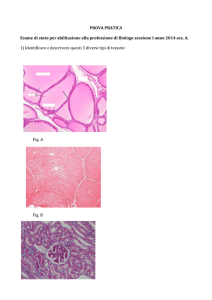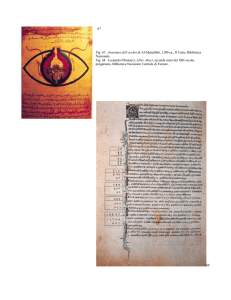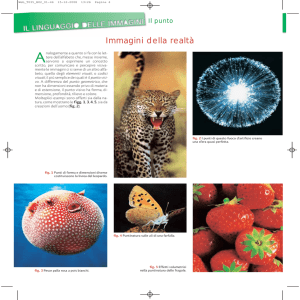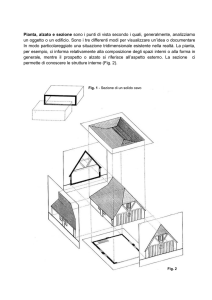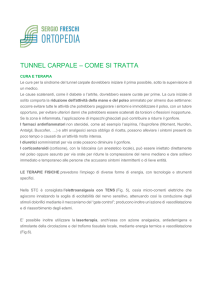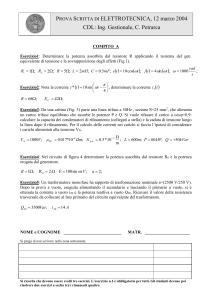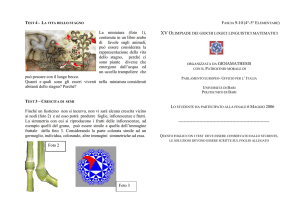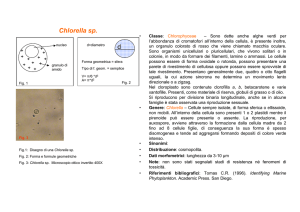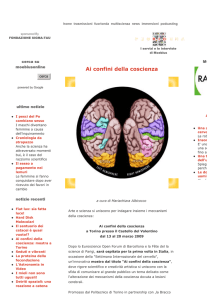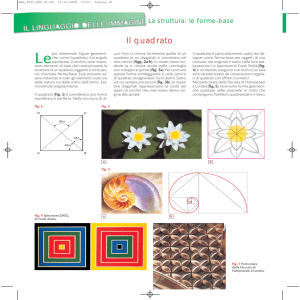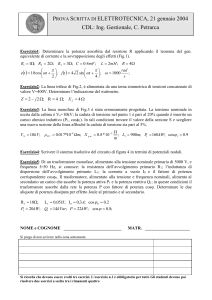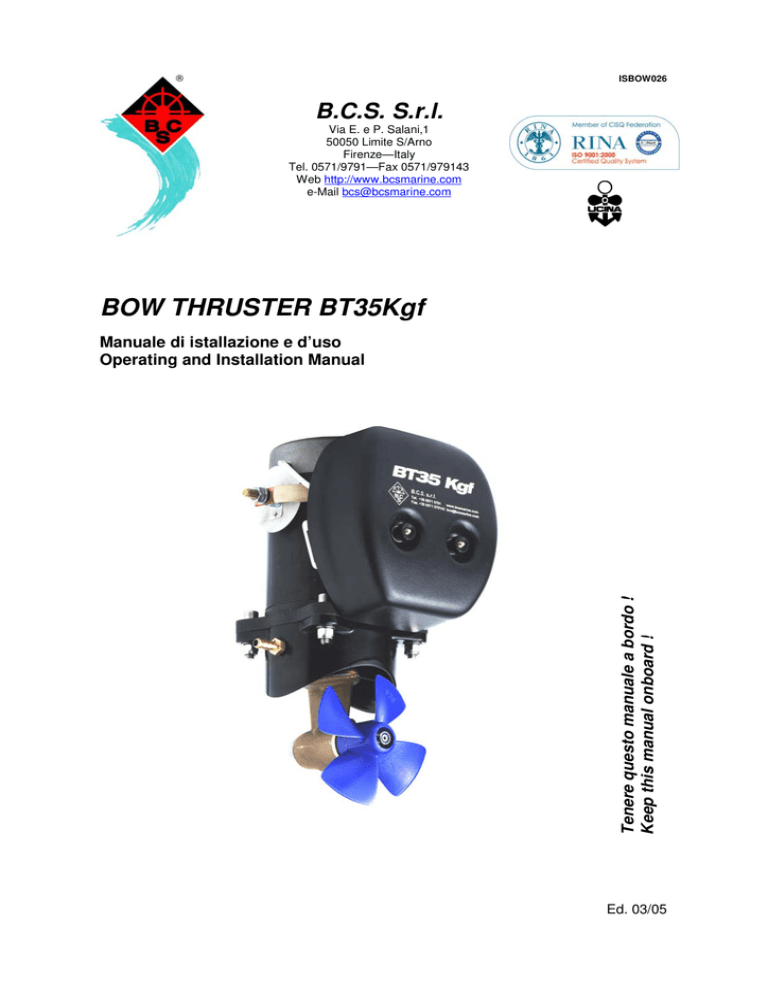
ISBOW026
B.C.S. S.r.l.
Via E. e P. Salani,1
50050 Limite S/Arno
Firenze—Italy
Tel. 0571/9791—Fax 0571/979143
Web http://www.bcsmarine.com
e-Mail [email protected]
BOW THRUSTER BT35Kgf
Tenere questo manuale a bordo !
Keep this manual onboard !
Manuale di istallazione e d’uso
Operating and Installation Manual
Ed. 03/05
1
BOW THRUSTER BT35Kgf
ITALIANO
PREFAZIONE ..........................................................................................................................................................................................2
NORME GENERALI DI SICUREZZA........................................................................................................................................................2
INTRODUZIONE ......................................................................................................................................................................................3
1 CARATTERISTICHE TECNICHE ..........................................................................................................................................................3
2 RACCOMANDAZIONI PER L’INSTALLAZIONE....................................................................................................................................3
2.1 COLLOCAZIONE DEL TUNNEL.........................................................................................................................................................4
2.2 COLLOCAZIONE DEL BOW THRUSTER NEL TUNNEL ...................................................................................................................4
2.2 COLLOCAZIONE DEL BOW THRUSTER NEL TUNNEL ...................................................................................................................5
2.3 MONTAGGIO DEL TUNNEL NELLO SCAFO.....................................................................................................................................5
2.4 MONTAGGIO DEL PIEDE E DELLA FLANGIA MOTORE..................................................................................................................6
2.4 MONTAGGIO DEL PIEDE E DELLA FLANGIA MOTORE..................................................................................................................7
2.5 MONTAGGIO DELL’ELICA E DEL SERBATOIO DELL’OLIO.............................................................................................................8
2.6 MONTAGGIO DEL MOTORE ELETTRICO ........................................................................................................................................8
3 INSTALLAZIONE ELETTRICA ..............................................................................................................................................................9
4 FUNZIONAMENTO .............................................................................................................................................................................11
5 MANUTENZIONE................................................................................................................................................................................12
5.1 RISOLUZIONE DEI PROBLEMI .......................................................................................................................................................13
6 PARTI DI RICAMBIO BOW THRUSTER ELETTRICO BT-35 ..............................................................................................................14
CONDIZIONI DI GARANZIA...................................................................................................................................................................15
ENGLISH
FOREWORD.........................................................................................................................................................................................16
INTRODUCTION....................................................................................................................................................................................17
1 TECHNICAL CHARACTERISTICS......................................................................................................................................................17
2 INSTALLATION RECCOMENDATIONS..............................................................................................................................................17
2.1 TUNNEL LOCATION........................................................................................................................................................................18
2.2 LOCATING THE BOW THRUSTER IN THE TUNNEL ......................................................................................................................18
2.2 LOCATING THE BOW THRUSTER IN THE TUNNEL ......................................................................................................................19
2.3 ASSEMBLING THE TUNNEL IN THE HULL.....................................................................................................................................19
2.4 ASSEMBLING THE TAIL PIECE AND THE MOTOR FLANGE.........................................................................................................20
2.4 ASSEMBLING THE TAIL PIECE AND THE MOTOR FLANGE.........................................................................................................21
2.5 ASSEMBLING OF THE PROPELLER AND THE OIL RESERVOIR..................................................................................................22
2.6 ASSEMBLING THE ELECTRIC MOTOR..........................................................................................................................................22
3 ELECTRICAL INSTALLATION ............................................................................................................................................................23
4 FUNCTION..........................................................................................................................................................................................25
5 MAINTENANCE ..................................................................................................................................................................................26
5.1 PROBLEM SOLVING .......................................................................................................................................................................27
6 SPARE PARTS FOR ELECTRIC BOW THRUSTER BT-35 ................................................................................................................28
WARRANTY CONDITIONS....................................................................................................................................................................29
2
ITA
PREFAZIONE
In questo manuale sono descritte tutte le norme di montaggio, di uso e manutenzione per ottenere dal bow thruster installato i risultati
migliori e la sua durata più lunga.
Vi consigliamo di leggere attentamente queste raccomandazioni prima di mettere in servizio il bow thruster e di osservarle
scrupolosamente.
Mentre restiamo a vostra completa disposizione per tutti i bisogni di assistenza che si potessero presentare ci permettiamo di ricordarvi
che il mancato rispetto delle prescrizioni descritte in questo manuale provocherà la decadenza della garanzia.
La società B.C.S. si riserva il diritto di apportare tutte le modifiche che riterrà necessarie per un migliore funzionamento del dispositivo.
Per eventuali chiarimenti o problemi che si potessero presentare vogliate contattare:
B.C.S. S.r.l. Via E. e P. Salani, 1 – 50050 LIMITE SULL’ARNO (FI) ITALY
Tel. 0571-9791 – Telefax 0571 –979143
[email protected]
[email protected]
NORMATIVA CEE – ISO
LE ISTRUZIONI CONTENUTE IN QUESTO MANUALE SONO DESTINATE AGLI INSTALLATORI PER FACILITARE IL MONTAGGIO
E AGLI UTILIZZATORI PER L’USO E LA MANUTENZIONE.
Le indicazioni segnalate sono importanti ai fini della sicurezza e sono identificate diversamente a seconda della
pericolosità della circostanza cui si riferiscono:
PERICOLO!
Un avviso come questo indica l’esistenza di un grave rischio, che ha alte probabilità di causare morte o un grave
infortunio, se non vengono adottate le precauzioni appropriate.
AVVERTENZA! Un avviso come questo indica l’esistenza di un rischio che potrebbe causare infortuni o morte se non vengono
adottate le precauzioni appropriate.
ATTENZIONE! Un avviso come questo indica un richiamo all’applicazione di pratiche di sicurezza, oppure richiama l’attenzione su
comportamenti poco sicuri che potrebbero causare infortuni personali o danni all’imbarcazione o ai suoi componenti.
NORME GENERALI DI SICUREZZA
•
Al ricevimento, aprire l’imballaggio, verificare che tutti i
componenti del sistema non abbiano subito danni durante
il trasporto; se vi fossero, segnalarli tempestivamente al
trasportatore. Inoltre le parti immagazzinate dovrebbero
essere periodicamente verificate per individuare eventuali
deterioramenti e movimentate con mezzi adatti ad
impedirne danneggiamenti.
•
Gli addetti alla installazione, messa in servizio, uso,
manutenzione e riparazione sono tenuti a leggere,
comprendere e seguire le istruzioni d’uso, in particolare le
norme di sicurezza.
•
Tutto il personale addetto alla manutenzione di questo
dispositivo deve seguire procedure operative sicure. La
B.C.S. non sarà considerata responsabile per ferite
personali dovute all’uso non accurato di strumenti manuali,
apparecchiature di sollevamento, strumenti elettrici o di
procedure di manutenzione/lavoro non accettabili.
•
I prodotti devono essere conformi alle informazioni
tecniche specificate. Osservare le procedure di
installazione, manutenzione e funzionamento idonee.
Eseguire ispezioni, per quanto necessario, al fine di
assicurare condizioni di funzionamento sicuro nelle
condizioni predominanti.
•
Eventuali anomalie di funzionamento dell’impianto devono
essere segnalate immediatamente al personale esperto
autorizzato.
•
La messa fuori servizio deliberata di un dispositivo di
sicurezza costituisce reato ai sensi del codice penale
vigente nel paese di destinazione. (Attuazione della
direttiva 89/391 CEE).
•
La responsabilità in caso di modifiche o trasformazioni
degli impianti, da parte dell’utente, concernenti la
sicurezza, riguarda solo l’utilizzatore.
•
Utilizzare solo parti di ricambio originali in caso di
sostituzione dei componenti. Il costruttore declina ogni
responsabilità in caso di mancata osservanza.
•
In caso di modifica delle norme di sicurezza susseguente
alla consegna dell’impianto, la responsabilità per
l’eventuale adeguamento alle norme riguarda l’utilizzatore.
•
Qualora gli impianti vengano comprati usati, l’utente è
tenuto a verificarne l’integrità e la conformità alle norme
vigenti.
•
Qualora il presente manuale divenga illeggibile o
incompleto, per usura o per altri motivi, Vi preghiamo di
rivolgerVi alla B.C.S. per ordinarne un’altra copia. Al
ricevimento del manuale, ed anche in seguito, si consiglia
in particolare di controllare regolarmente la completezza
delle norme di sicurezza.
•
I rifiuti ed i materiali di scarto dell’installazione e della
manutenzione (imballaggi, oli, grassi, solventi, etc.)
devono essere smaltiti in conformità con la legge sui rifiuti
e le prescrizioni dell’autorità locale preposta.
N.B.: Le descrizioni e le illustrazioni di queste istruzioni si intendono fornite solo a titolo indicativo. Per informazioni
più dettagliate si prega di contattare il nostro ufficio vendite. In qualsiasi momento e senza preavviso B.C.S. si
riserva il diritto di apportare ai prodotti eventuali modifiche ritenute opportune e necessarie.
BOW THRUSTER BT35Kgf
ITA
3
INTRODUZIONE
La qualità della istallazione è determinante per l’affidabilità dell’elica di prua. Quasi tutti i problemi che si verificano sono da ricondurre
ad errori o inaccuratezze nell’istallazione. E’ perciò della massima importanza seguire e controllare, durante la procedura di istallazione,
tutti i punti presenti nella presente istruzione per l’istallazione.
Assicurarsi che il proprietario dell’imbarcazione disponga del manuale.
AVVERTENZA !
Assicurarsi di avere preso visione e compreso i requisiti di funzionamento e sicurezza del bow thruster.
Il bow thruster non deve essere utilizzato vicino a bagnanti a causa della grande quantità di acqua aspirata
durante l’uso.
L’istallazione del tunnel e tutte le modifiche allo scafo devono essere eseguite da specialisti.
Raccomandiamo di fare installare il bow thruster da personale qualificato. Una installazione errata può mettere la barca
ed il suo equipaggio in pericolo
1 CARATTERISTICHE TECNICHE
Bow thruster
Tipo
Peso
Motore elettrico
Tipo
Tensione
Corrente
Potenza nominale
Nr. giri
Durata di azionamento
Protezione
Conforme normative CE (89/336/EEC/EMC-EN60945)
Trasmissione
Ingranaggi
Rapporto di trasmissione
Lubrificazione
Elica
Diametro
Numero pale
Profilo
Propulsione nominale
Materiale
Batterie
Capacità minima delle batterie raccomandata
(capacità avviamento a freddo secondo norma DIN)
Dimensioni principali ed ingombri
A
125
B
218
C
125 min
D
250÷500
E
4
F
135
G
50
H
500 min
BT35Kgf
10.5 Kg
Motore in c.c. reversibile
12 Vdc
280 A
2.2 Kw / 3Hp
6075 rpm
S2 – 3min
IP43
Denti conici spiroidali
1,33 : 1
Bagno di olio tipo EP90 litri 0.3 ca.
123 [mm]
4
Simmetrico
350 [N] / 35 [Kgf] / 75 [lbf]
Poliacetato (Derlin®)
300 CCA DIN
Quote espresse in mm
2 RACCOMANDAZIONI PER L’INSTALLAZIONE
È opportuno installare lungo la linea positiva di alimentazione
un interruttore ed un fusibile in modo da potere isolare
l’alimentazione del bow thruster e per potere preservare il bow
thruster da eventuali sovraccarichi e proteggere la linea di
bordo da corto circuiti. La posizione a bordo deve essere in un
luogo facilmente accessibile e conosciuto dalla persona
responsabile a bordo. La linea di alimentazione del bow
thruster deve essere staccata quando nessuno è a bordo.
I bow thruster elettrici utilizzano motori da alte potenze, ed è
quindi necessario utilizzare batterie con sufficiente capacità e
cavi di opportuno diametro per evitare problemi di perdita di
prestazioni o pericolosi surriscaldamenti.
Il luogo dove viene installato il motore elettrico del bow thruster
e dove viene collocata la batteria deve essere asciutto e ben
ventilato.
La batteria non deve essere connessa fino a quando non è
stata ultimata l’istallazione del bow thruster.
4
ITA
2.1 COLLOCAZIONE DEL TUNNEL
Punto di rotazione
dell’imbarcazione
B = 9 mt
A = 10 mt
Fig. 2
Tunnel
Fig. 1
Fig. 5
Per ottenere un risultato ottimale, collocare il tunnel
del bow thruster il più vicino possibile alla prua
dell’imbarcazione (Fig. 1). A causa dell’effetto leva, la spinta
del bow thruster è determinata dalla distanza relativa tra il
tunnel ed il punto di rotazione dell’imbarcazione (Fig. 2).
Esempio:
A: 55Kg di spinta x 10m di leva = 550Kgm di coppia.
B: 55Kg di spinta x 9m di leva = 495Kgm di coppia.
Nella posizione A si ottiene il 10% di coppia in più.
In una imbarcazione planante, collocare il tunnel in modo tale
che questo si trovi sopra il livello dell’acqua durante la
navigazione, così da evitare qualsiasi attrito (Fig. 3).
In caso di imbarcazioni di grosse dimensioni, si possono
installare due bow thruster uno dietro l’altro. In questo caso, a
secondo delle condizioni meteorologiche, le eliche possono
essere usate singolarmente o simultaneamente (Fig. 4).
La posizione del tunnel deve essere la più profonda possibile
(Fig. 5) per le seguenti motivazioni:
•
Per impedire che venga aspirata aria dalla superficie che
abbatterebbe completamente la spinta disponibile.
•
Per avere una pressione dell’acqua più alta possibile
sfruttando al massimo l’efficienza dell’elica.
Generalmente la parte alta del tunnel dovrebbe essere almeno
1/2 x Diametro tunnel sotto il pelo dell’acqua. Questo è un
minimo assoluto mentre noi raccomandiamo almeno 3/4 x
Diametro sotto il pelo dell’acqua. Una distanza ottimale è di
circa 1/1 x Diametro.
La lunghezza ottimale del tunnel è tra 2 e 4 volte il diametro
del tunnel; devono essere evitati tunnel lunghi più di 6/7 volte il
diametro per evitare perdite consistenti di spinta. Se il tunnel è
troppo lungo, l’attrito all’interno riduce la velocità dell’acqua e
di conseguenza la spinta. Se la lunghezza è troppo corta
(normalmente nella parte inferiore del tunnel) si può avere
cavitazione ottenendo una riduzione delle prestazioni e rumore
(Figg. 6/7).
IMBARCAZIONE PLANANTE
Tunnel
Livello acqua
Fig. 3
IMBARCAZIONE DI GROSSE DIMENSIONI
Bow-thruster
Livello acqua
Fig. 4
Fig. 6/7
BOW THRUSTER BT35Kgf
ITA
5
2.2 COLLOCAZIONE DEL BOW THRUSTER NEL TUNNEL
Bow-thruster
Bow-thruster
Supporto
Fig. 8
Fig. 9
Al momento di determinare l’esatta posizione dell’elica nel
tunnel è necessario tenere presente che il piede NON deve
fuoriuscire dal tunnel. Il bow thruster dovrebbe essere
preferibilmente collocato al centro della barca, e comunque
sempre accessibile dall’esterno (Fig. 8).
Il motore può essere montato in diverse posizioni. Se il motore
è collocato in posizione orizzontale, o comunque con un
angolo superiore ai 30°rispetto alla verticale, è assolutamente
necessario supportare il motore. Il motore deve essere sempre
collocato al di sopra del livello massimo dell’acqua di sentina
(Fig. 9).
2.3 MONTAGGIO DEL TUNNEL NELLO SCAFO
Tunnel
Estremità curva
Fig. 12
Diametro
tunnel
Estremità a spigolo
Fig. 10
Estremità raggiate
Rmin=0.1xD
Fig. 11
Estremità curva
Tunnel
Fig. 13
Rientranza nello scafo
Scafo senza
rientranza
Fig. 14
NOTA BENE: Il modo in cui il tunnel è collegato allo
scafo influenza enormemente la propulsione
dell’elica e l’attrito esercitato dallo scafo durante la
navigazione normale.
Si raccomanda di arrotondare il più possibile la connessione tra
tunnel e scafo. La raggiatura ottimale è quella pari al 10% del
diametro del tunnel. I vantaggi rispetto ad una connessione a
spigolo sono:
•
Un tunnel con estremità raggiate previene la creazione di
turbolenze e cavitazione evitando perdite di spinta ed
aumento di rumore (Figg. 10 e 11).
•
Un tunnel con estremità curva fa si che il bow thruster
aspiri acqua anche lungo la parete dello scafo, creando così
una depressione che aspira la barca lateralmente, fornendo
quindi una spinta addizionale (Figg. 12 e 13).
•
Per ridurre ogni potenziale perdita di performance, l’ingresso
del tunnel può essere modificato per aumentare la spinta e
ridurre il rumore (Fig. 14). La migliore soluzione che
normalmente riduce la resistenza è realizzare una rientranza
nello scafo dietro il tunnel. Sostanzialmente non si dovrebbe
vedere la parte posteriore del tunnel guardando frontalmente la
barca. L’angolazione dell’inserto sullo scafo dipende dalla
forma dello scafo, ma normalmente è angolato leggermente
verso il basso a causa del flusso di acqua in questa zona dello
scafo. La resistenza può essere molto ridotta, specialmente in
barche veloci, creando un deflettore/spoiler sul fronte del
tunnel. La forma e la dimensione di questo deflettore dipende
dalla forma dello scafo.
6
ITA
ATTENZIONE !
Raccomandiamo che il montaggio del tunnel venga
eseguito da personale esperto. Le presenti
istruzioni sono solo generali, e non spiegano in
dettaglio la lavorazione delle fibre di vetro.
Problemi dovuti ad una errata installazione sono
completamente da attribuire agli istallatori.
•
Trovata la posizione nella barca in accordo con le informazioni
date nei paragrafi precedenti, praticare 2 fori nello scafo per
individuare il centro del tunnel (Fig. 15).
•
Fare passare lo strumento per contrassegnare il profilo del
tunnel (non fornito) attraverso i fori praticati e segnare il
diametro esterno del tunnel sullo scafo (Fig. 16).
•
Una volta costruito lo scafo, praticare le due aperture per
mezzo di utensili appropriati (Fig. 17a-17b).
Montare il tunnel (Fig. 18).
TUNNEL IN POLIESTERE
Resina
La resina utilizzata per il tunnel in poliestere è una resina poliestere a base di acido isoftalico (Norpol PI
2857).
Trattamento
L’esterno del tunnel deve essere pulito. Utilizzando un disco per molatura, rimuovere tutto lo strato superiore
fino alla fibra di vetro.
Importante
Trattare con della resina le estremità del tunnel, dopo avere segato quest’ultimo alla lunghezza desiderata. Si
eviterà così che l’umidità penetri nel materiale.
Laminare
Come primo strato applicare uno strato di resina. Applicare un feltro di fibra di vetro ed impregnarlo con la
resina, ripetendo questa operazione finché non sarà stato applicato un numero sufficiente di strati.
Un tunnel in poliestere deve essere rifinito come segue (Fig. 19):
•
Grattare il feltro in fibra di vetro indurito.
•
Applicare uno strato di resina.
•
Trattare i lati del tunnel che vengono in contatto con
l’acqua ad esempio con vernice epossidica o con una
vernice poliuretanica a due componenti.
Applicare successivamente un eventuale vernice
antivegetativa.
Fig. 15
Fig. 16
Fig. 17a
Fig. 17b
Fig. 18
Fig. 19
BOW THRUSTER BT35Kgf
ITA
7
2.4 MONTAGGIO DEL PIEDE E DELLA FLANGIA MOTORE
Distanza
elica/tunnel
Fori allineati
Tunnel
Tunnel
Fig. 20
Fig. 21
Flangia motore
Bulloni
Flangia motore
O-ring
O-ring
Fig. 22
Tunnel
Piede
Fig. 23
Fig. 24
Contrassegnare la mezzeria del tunnel e la mezzeria della
imbarcazione.
Se il tunnel non è liscio, utilizzare ad esempio del Sikaflex per
far sì che non vi siano perdite (Fig. 21).
Per mezzo della dima di foratura (in dotazione) contrassegnare
il centro dei fori e ricontrollare le misure. Tutti i fori devono
essere allineati con precisione con la mezzeria del tunnel, in
quanto la tolleranza tra l’elica ed il tunnel è minima (Fig. 20).
Inserire i due O-ring nelle opportune sedi all’interno del foro
principale della flangia motore, verificando che vi sia dell’olio
o del grasso prima di assemblarla assieme al piede (Fig. 22).
Non si deve eseguire nessuna lavorazione di resinatura nella
zona in cui si posizionerà la flangia del motore. La flangia deve
essere montata saldamente sul tunnel; se la superficie del
tunnel non è liscia, occorre asportare con carta vetrata tutte le
protuberanze o le parti disuniformi, fino a renderla
perfettamente liscia.
Praticare il foro principale e poi i due fori delle viti e ripulirli
bene.
Provare a far funzionare il piede del bow-thruster utilizzando la
guarnizione all’interno del tunnel. Provare a fare girare l’elica
accertandosi che sia centrata rispetto al tunnel e che giri
liberamente con la stessa distanza tra ogni pala ed il tunnel.
Installare la guarnizione fra la coda e il tunnel. Fra la coda e la
guarnizione applicare della pasta sigillante (poliuretano* o
silicone), e poi collocare la coda nel foro del tunnel. *) ad es.
Sikaflex®-240 o Sikaflex®-241 (Fig. 23).
Spingere il piede attraverso il foro principale del tunnel e
spingere il piede e la flangia motore delicatamente una verso
l’altra. Avvitare il piede alla flangia con i due bulloni in
dotazione (Fig. 24). Serrare con una coppia di 17Nm/12.4 lb/ft.
Se il bow thruster è istallato con un angolo orizzontale, il tubo
di alimentazione sulla flangia motore deve essere sempre
rivolto verso l’alto, per far sì che l’olio defluisca liberamente nel
piede.
ATTENZIONE !
Controllare che non vi siano perdite subito dopo avere messo in acqua l’imbarcazione
8
ITA
2.5 MONTAGGIO DELL’ELICA E DEL SERBATOIO DELL’OLIO
Serbatoio dell’olio
Flangia
Albero
Elica
Piede
Fig. 26
Dado di bloccaggio
Piede
Rondella
Fare ruotare l’albero dell’elica in modo che il perno di
trasmissione sia in posizione orizzontale e verificare che sia
completamente centrato. Spingere l’elica sull’albero con la
sede del perno di trasmissione in posizione orizzontale (stessa
direzione del perno di trasmissione) fino ad andare a battuta.
Posizionare la rondella sull’albero dell’elica e poi serrare il
dado di bloccaggio (Fig. 25).
Perno di
trasmissione
Fig. 25
Ciò per assicurare che vi sia una sovrapressione sufficiente
dell’olio nel piede (Fig. 26). Accertarsi che il tubo dell’olio non
formi delle anse per cui si formino delle bolle di aria che
interrompano il flusso di olio e che abbia una angolazione
corretta in modo da consentire all’olio di defluire liberamente
nel piede. Riempire il serbatoio con olio per ingranaggi tipo
EP90.
Montare il serbatoio dell’olio al di sopra della linea di
galleggiamento ad una altezza minima di 500mm/20in.
2.6 MONTAGGIO DEL MOTORE ELETTRICO
Bulloni 17Nm/12.4lbft
Motore elettrico
Bulloni
17Nm/12.4lbft
Fig. 27
Ruotare l’albero di comando nel piede e ruotare l’albero del
motore elettrico, in modo che la sede della spina di sicurezza
abbia una direzione corrispondente a quella della spina di
sicurezza nell’albero del motore elettrico.
Fare scorrere delicatamente il motore elettrico sull’albero di
comando e la flangia motore. Può essere necessario muoverlo
un pò da una parte e dall’altra per farlo entrare, perchè fa una
certa resistenza.
Il motore elettrico può essere posizionato in tutte le direzioni
sulla flangia. Verificare che i morsetti dei cavi siano disponibili
per la successiva istallazione elettrica.
Serrare i bulloni per il fissaggio del motore elettrico (in
dotazione) con una coppia di 17Nm /12.4lbft (Fig. 27).
Per un primo controllo, fare ruotare l’elica con la mano che
deve potere girare senza attrito, pur essendo collegata
all’albero motore.
BOW THRUSTER BT35Kgf
ITA
9
3 INSTALLAZIONE ELETTRICA
Bulloni
15Nm/11lbft
Batteria
Fusibile (B)
Fig. 28
Interruttore
generale (A)
ATTENZIONE !
La durata massima di azionamento e la
propulsione indicate nei dati tecnici si basano
sulle raccomandazioni relative alla capacità della
batteria ed alla lunghezza dei cavi.
L’uso di batterie molto superiori in combinazione
con cavi di collegamento della batteria molto corti,
dal diametro molto più grande di quello
raccomandato, faranno aumentare la propulsione.
In questo caso ridurre la durata massima di
azionamento, per evitare di danneggiare il motore.
In casi estremi, ad esempio quando si utilizza una
batteria con capacità 5 volte superiore o più a
quella consigliata, c’è il pericolo che il perno di
sicurezza si rompa (troppo) velocemente.
Inoltre c’è il pericolo che uno dei due o entrambi i
seguenti collegamenti dell’albero vengano
permanentemente danneggiati:
• Il collegamento fra l’albero del motore elettrico e
l’albero di comando del piede.
• Il collegamento fra l’albero di uscita del piede e l’elica.
Controllare che la tensione indicata sulla targhetta del motore,
corrisponda alla tensione di bordo. Collocare la batteria o le
batterie il più vicino possibile al bow thruster. I cavi di
alimentazione principali potranno quindi essere corti,
riducendo al minimo le perdite di tensione.
E’ importante utilizzare cavi adeguatamente dimensionati e
batterie con una elevata capacità a freddo per l’alimentazione
del propulsore, perchè è la tensione effettiva che si ha in
corrispondenza del motore quando viene azionato il
propulsore che determina il numero di giri del motore e
pertanto la spinta effettiva.
L’elenco seguente riporta le dimensioni raccomandate per cavi e batterie (Tab. 1):
Dimensioni MINIME raccomandate per cavi e batterie
BT35
Corrente
assorbita
Capacità minima delle batterie raccomandata (capacità
300 CCA DIN
avviamento a freddo secondo norma DIN)
Massima lunghezza dei cavi dalla batteria al bow thruster e ritorno in metri [m] data la sezione del cavo (mm2)
280A
mm2
25
35
50
70
95
120
150
175
m
6
9
14
18
N/R
N/R
N/R
N/R
Massima lunghezza dei cavi dalla batteria al bow thruster e ritorno in piedi [ft] data la sezione del cavo (AWG)
AWG
3
2
1
0
00
000
0000
2x0000
ft
20
30
40
50
60
N/R
N/R
N/R
Un interruttore generale (A) in grado di portare il carico
senza caduta di tensione apprezzabile deve essere istallato
sul positivo principale, in modo tale che sia possibile escludere
il propulsore indipendentemente dal resto del carico quando
non c’è nessuno a bordo o in caso di emergenza. Questo deve
essere istallato in un posto facilmente accessibile e nelle
istruzioni della imbarcazione deve essere spiegato che esso
deve essere spento al pari degli altri interruttori generali
dell’imbarcazione (Fig. 28).
Si raccomanda inoltre di installare un fusibile (B) sul positivo
come protezione contro i cortocircuiti dei cavi principali. Tale
fusibile deve essere di qualità adeguata, il che di norma
significa che le sue dimensioni fisiche sono notevoli, in quanto
tale tipo di fusibile ha una caduta di tensione minore a rispetto
a quelli più semplici\piccoli. Il fusibile deve essere di tipo lento
e dimensionato in modo tale da tenere al passaggio della
corrente nominale per almeno 5 minuti.
Il fusibile deve essere di tipo lento e dimensionato in
modo tale da tenere al passaggio della corrente nominale
per almeno 5 minuti.
Le estremità del cavo devono essere dotate di morsetti e
questi devono essere ben isolati, escludendo il contatto con
qualsiasi cosa che non sia l’opportuno punto di collegamento.
Serrare i bulloni M8 con una coppia di 15Nm/11lbft (Fig. 28).
10
ITA
PANNELLO DI COMANDO E ACCESSORI
DISPOSITIVO DI RITARDO
Fig. 29
PANNELLI DI COMANDO
MODELLO
DESCRIZIONE
CODICE
BTJOY
Pannello di comando bow-thruster con joy-stick
15726
BTINT
Pannello di comando bow-thruster con pulsante
15727
BTRIT/12
Kit ritardo elettrico a 12V
12214
BTRIT/24
Kit ritardo elettrico a 24V
12215
Motore elettrico
BTINT
BTJOY
BTINT
BTJOY
Cavo blu
Cavo bianco
Fig. 30
BTRIT
Montare il pannello di comando nella plancia. Lo spazio libero
dietro il pannello deve essere di almeno 50mm (Fig. 29).
Istallare la prolunga tra l’elica di prua ed il pannello di
comando all’interno della imbarcazione e collegare le spine.
Se è necessario tagliare la prolunga e ricollegarla assicurarsi
che i cavi siano collegati per colore.
N.B. I colori dei cavi della prolunga possono
essere diversi dai colori dei cavi utilizzati sul
motore dell’elica e sul pannello di comando!
Tra l’elica di prua ed il pannello di commutazione è possibile
istallare un eventuale dispositivo di ritardo (BTRIT),
attraverso il quale si concede al motore elettrico il tempo
necessario per arrestarsi, quando in un singolo movimento si
passa da babordo a tribordo o viceversa. Se ci sono due
comandi, il secondo pannello può essere collegato al primo.
Se durante la prova si nota che la direzione di propulsione
dell’elica non corrisponde a quella dell’interruttore di direzione
sul pannello di comando, il cavo blu (A) ed il cavo bianco (B)
sul teleriduttore devono essere invertiti (Fig. 30).
ATTENZIONE !
Non testare il Bow-Thruster mentre l’imbarcazione è fuori dall’acqua, a meno che non siate sicuri che tutti si trovino
a distanza di sicurezza dal tunnel. Quando l’imbarcazione è fuori dall’acqua, non fare girare mai l’elica per più di 5
secondi.
BOW THRUSTER BT35Kgf
ITA
11
SCHEMA ELETTRICO
1
Fusibile principale
5
Motore elettrico
9
Spina femmina
2
Interruttore principale
6
Pannello di comando
10
Prolunga
3
Fusibile del circuito di comando
7
Batteria
11
Alternatore
4
Interruttore soleonidale
8
Spina maschio
4 Funzionamento
In base alla superficie laterale esposta al vento, alla stazza ed
alla forma dell’opera viva, la propulsione generata dall’elica di
prua darà un risultato diverso su ogni imbarcazione.
La propulsione nominale è raggiungibile soltanto in condizioni
ottimali.
Sincerarsi che durante l’uso la tensione della batteria sia
quella giusta.
L’istallazione deve essere eseguita nel rispetto delle
raccomandazioni indicate nelle istruzioni per l’istallazione, in
particolare in riferimento a:
•
Limitare le perdite di tensione lungo i cavi della batteria
utilizzando un diametro sufficiente.
•
Il modo in cui il tunnel è collegato allo scafo.
•
Collocare le sbarre nelle aperture del tunnel solo se
strettamente necessario.
Rispettando le seguenti raccomandazioni otterrete una
maggiore durata dell’elica di prua e migliori prestazioni:
•
Eseguire regolarmente le operazioni di manutenzione.
•
Non fare girare mai l’elica di prua troppo a lungo; per
motivi legati allo sviluppo di calore nel motore elettrico, la
durata massima è limitata. Dopo un po’ di tempo che l’elica
gira, il motore va fatto raffreddare.
La durata massima di azionamento, che è pure la durata
massima oraria di azionamento, è per il BT35Kgf - 12Vdc di
3min a 280 A.
ATTENZIONE !
Durante l’uso dell’elica di prua fare attenzione ad eventuali bagnanti o piccole imbarcazioni che potrebbero trovarsi
nelle immediate vicinanze delle aperture dell’elica.
Se sono stati istallati due pannelli di comando, non comandare l’elica contemporaneamente con entrambi i pannelli.
Interruttore generale
•
Accendere l’interruttore principale (Fig. 31).
•
Premere l’interruttore “ON/OFF”. La spia si accende e l’elica di prua è pronta per l’uso.
•
Il motore elettrico viene comandato tramite l’interruttore di selezione.
Fig. 31
ATTENZIONE !
Non passare mai con un solo movimento da babordo a tribordo o viceversa, ma dare sempre al motore il tempo di
arrestarsi completamente, prima di iniziare a farlo girare nella direzione opposta.
•
Dopo avere usato l’elica di prua premere nuovamente l’interruttore “ON/OFF”.
•
Prima di scendere a terra spegnere nuovamente l’interruttore principale.
12
ITA
5 MANUTENZIONE
Serbatoio dell’olio
Flangia
Bulloni
Sigillante - locktite
Piede
Fig. 32
Vite di fissaggio
Piede
Fig. 33
Elica
Controllare regolarmente il livello dell’olio nel serbatoio.
All’inizio il livello scenderà un po’, finché il piede non sarà
riempito completamente d’olio. Se necessario, rabboccare con
olio per ingranaggi tipo EP90 (Fig. 32).
Consultare il proprio rivenditore per informarsi su come
eseguire questa operazione (Fig. 33).
Sostituire l’olio almeno ogni due anni. Controllare la qualità
dell’olio nel piede ogni volta che la barca è tirata a secco.
•
L’elica sia ben fissata.
•
I bulloni di fissaggio del motore elettrico alla flangia
motore siano ben stretti.
•
La zona in cui è istallato il bow thruster sia pulita ed
asciutta; se è presente acqua o umidità occorre
individuare la fonte ed eliminarla.
•
Tutti i collegamenti elettrici siano puliti e fissati
saldamente.
•
Accertarsi che le batterie siano in buone condizioni in
modo tale che il bow thruster riceva una tensione
adeguata. Le batterie vecchie o difettose provocano un
calo delle prestazioni del bow thruster.
N.B. Per la manutenzione della batteria è necessario
seguire le istruzioni fornite dal suo costruttore.
Durante la prima manutenzione a terra, serrare i bulloni che
fissano il piede alla flangia del motore con la coppia
specificata nelle istruzioni di istallazione.
Tenere il piede e l’elica puliti, verniciando con una vernice
antivegetativa prima di ogni stagione.
N.B. Non bisogna assolutamente verniciare l’anodo di
zinco, le guarnizioni e l’albero dell’elica.
Sostituire l’anodo di zinco prima di ogni stagione, o quando si
è consumato per circa la metà. Utilizzare sempre un sigillante
sulla vite di fissaggio dell’anodo di zinco per impedire che si
stacchi. Tenere presente che in alcune condizioni marine può
essere necessario istallare un secondo anodo di zinco per
avere la certezza che duri per l’intero periodo compreso tra
due manutenzioni a terra dell’imbarcazione.
Durante la manutenzione stagionale dell’imbarcazione, e prima
di ogni stagione, controllare sempre che:
BOW THRUSTER BT35Kgf
ITA
13
5.1 RISOLUZIONE DEI PROBLEMI
Problema
Soluzione
1) Il motore elettrico gira ma non c’è spinta
La spina di sicurezza tra il motore e l’albero di comando all’interno Sostituire la spina di sicurezza e controllare l’istallazione del
dell’imbarcazione potrebbe essere rotta.
motore elettrico verificando che la spina di sicurezza sia collegata
correttamente prima di procedere al rimontaggio del motore
elettrico.
L’elica all’interno del tunnel non è fissata correttamente sull’albero Serrare di nuovo o sostituire l’elica e/o il perno di trasmissione.
dell’elica (il perno di trasmissione è presente).
Avendo rimosso il motore, fare girare l’albero di comando In caso di guasto all’interno del piede, si suggerisce di sostituire
dall’interno dell’imbarcazione per verificare che gli ingranaggi completamente il piede anziché di tentare di riparare il sistema di
siano innestati e che l’albero dell’elica giri.
ingranaggi e cuscinetti interni.
2) Il motore elettrico gira troppo lentamente
Controllare la tensione in corrispondenza del motore elettrico - Se la tensione è inferiore a 10.5Vdc le prestazioni non sono
mentre gira.
quelle aspettate.
- Verificare se la batteria è sufficientemente carica.
- La capacità della batteria è diminuita a causa della temperatura
molto rigida.
- Verificare che non vi sia un cattivo collegamento elettrico, ad
esempio a causa della corrosione.
Verificare che tutte le molle delle spazzole poggino correttamente - Se una o più spazzole sono allentate/non sono messe in tensione
sulle spazzole nel motore elettrico.
dalla molla, le prestazioni saranno scadenti.
Verificare che nell’elica, nel piede e nel tunnel siano incagliate di - Ripulire tutte le superfici.
alghe, lenze ecc.
3) Il motore elettrico non gira
Controllare che le tensioni del motore elettrico siano corrette per - Se il voltaggio non è corretto, contattare il proprio rivenditore.
l’istallazione, osservando le etichette.
Controllare che l’interruttore principale sia su “ON”.
- Posizionare l’interruttore principale sia su “ON”.
Controllare che il fusibile della corrente principale non sia bruciato. - Controllare i collegamenti elettrici, cavi e successivamente
sostituire il fusibile.
Controllare la tensione in corrispondenza del bow thruster mentre
si cerca di farlo funzionare. Tenere in moto il motore o i motori
principali dell’imbarcazione, in modo tale che le batterie vengano
caricate continuamente.
- Se la tensione è inferiore a 8.5Vdc in corrispondenza del bow
thruster, la tensione è insufficiente a consentire il corretto
funzionamento del bow thruster. In una imbarcazione con impianto
elettrico a 24Vdc, bow thruster può funzionare anche con una
tensione di soli 12Vdc ma le prestazioni saranno molto mediocri.
Individuare ed eliminare la causa di questa bassa tensione.
- Probabilmente la bassa tensione sarà dovuta a una o più delle
seguenti cause: dimensioni e connessioni dei cavi principali del e
batterie, dimensioni e stato delle batterie, prestazione del fusibile e
dell’interruttore generale.
Se i solenoidi principali situati sul bow thruster non danno il minimo
segno di innescarsi (non si sente il click), probabilmente essi non
ricevono il segnale dal pannello di controllo. Provare quindi a fare
girare il propulsore senza il pannello di comando, collegando
direttamente il filo rosso e quello azzurro, o il filo rosso e quello
bianco, nel contatto del cavo del pannello di controllo che proviene
dal bow thruster.
- Se il bow thruster gira in entrambe le direzioni, ripetere
l’operazione nel connettore che entra nella parte posteriore del
pannello di comando. Se funziona anche in questa posizione,
controllare il contatto ed anche i fili nella parte posteriore del
pannello di comando. Se il pannello di controllo non si accende,
misurare la tensione tra il rosso (+) ed il nero (-) nel contatto che
entra nel bow thruster. Se la tensione è corretta, è probabile che il
pannello di comando non funzioni.
Se nei precedenti test il bow thruster non gira, o gira in una unica - Se il cablaggio è corretto ed il bow thruster continua a non
direzione, controllare il cablaggio interno sul motore elettrico e sui funzionare, probabilmente il relè è rotto e deve essere sostituito.
solenoidi che deve essere conforme allo schema di connessione.
4) L’elica di prua perde olio
Controllare se la perdita di olio è all’interno della imbarcazione.
- Controllare innanzitutto il tubo del serbatoio dell’olio e i sui
componenti. Controllare l’anello di tenuta sull’albero motore sul
piede.
Se la perdita di olio non è all’interno della imbarcazione.
- Controllare gli anelli di tenuta dell’albero dell’elica nel piede del
bow thruster.
14
ITA
6 PARTI DI RICAMBIO BOW THRUSTER ELETTRICO BT-35
10
11
08
12
09
13
05
07
01
03
02
POSIZIONE DESCRIZIONE
CODICE
01
ANODO BOW-THRUSTER PER BT-35
21419
02
KIT ELICA 4 PALE d.123 mm COMPLETA PER BT-35
23649
03
SPINA FISSAGGIO ELICA d.4 – 23 mm PER BT-35
21447
04
/
05
PIEDE BOW THRUSTER 35Kgf - d.125 mm PER BT-35
06
/
07
SPINA GIUNTO d.4x20 PER BT-35
23607
08
KIT DI INGRASSAGGIO PIEDE BOW THRUSTER PER BT-35
21466
09
OLIO TIPO HD 80W/90 - TANICA DA 250 ml PER KIT INGRASSAGGIO PIEDE BOW-THRUSTER
15729
10
MOTORE 2200W - 12V PER BT-35
21442
11
KIT N°4 SPAZZOLE 9x13x23,5 MOTORE 2,2KW 12V PER BT-35
23718
12
RELÈ 12V PER BT-35
21435
13
CARTER NERO PER BT-35 12V
21440
/
21412
/
BOW THRUSTER BT35Kgf
ITA
15
CONDIZIONI DI GARANZIA
1. La B.C.S garantisce che il prodotto venduto è privo di qualsiasi difetto di fabbricazione o di altro difetto risultante da progettazione,
materie prime, fabbricazione o costruzione, nei termini e nei limiti sotto indicati.
2. Nel caso in cui le forniture siano installate dal cliente o una terza parte in qualsiasi altro impianto, essi rimangono i soli responsabili
per tale installazione. La selezione e idoneità dei prodotti forniti da B.C.S. quali schemi, disegni e proposte sono da intendersi
solamente come indicativi, se non diversamente specificato nell’ordine. In particolare, il produttore non garantisce per componenti o
equipaggiamenti non venduti dallo stesso così come l’assemblaggio, l’adattamento, il progetto, il funzionamento dell’impianto così
creato o parti di esso. Il prodotto fornito da B.C.S. così come l’impianto creato dal cliente o una terza parte, si suppone debbano
funzionare sotto l’esclusivo controllo del cliente o della terza parte.
3. Il periodo della garanzia è di 18 (diciotto) mesi a partire dalla data del primo utilizzo da parte dell’utente originale oppure di 24
(ventiquattro) mesi dalla data di consegna dei prodotti al trasportatore, distributore o rivenditore. Qualora i nostri impianti siano
montati o utilizzati su barche da lavoro o di tipo commerciale, il periodo di garanzia è di 12 (dodici) mesi dalla data di produzione. In
fine, la garanzia decade qualora alcune delle componenti B.C.S. siano installate su un impianto di comando unitamente a prodotti di
altri fornitori. Il produttore ha il diritto di richiedere al cliente prova della data di commissione specificata sulla richiesta di garanzia.
Questo periodo non può essere esteso e neppure interrotto per vie legali o amichevoli da parte del cliente. Al termine di questo
periodo la garanzia si ritiene conclusa senza ulteriori considerazioni.
4. L’obbligazione della garanzia si applica soltanto se il cliente stabilisce che il difetto si è presentato sotto normali condizioni di
funzionamento stipulate per questo tipo di prodotto, o indicate per iscritto dal produttore e durante normale utilizzo. Non viene altresì
applicata in caso di negligenza, cattiva manutenzione o supervisione, responsabilità dell’operatore, imprudenza, non osservanza
delle istruzioni di funzionamento raccomandate o utilizzo di olio di scarsa qualità per l’impianto. Il produttore è sollevato da qualsiasi
responsabilità in caso di danno causato da perdite di olio o trafilamenti. La garanzia non viene inoltre applicata in caso di incidenti
dovuti a cause di forza maggiore così come qualsiasi danno, sostituzione o riparazione che eccede la normale usura.
5. La garanzia è limitata alle riparazioni presso l’officina del produttore, a proprie spese e nel più breve tempo possibile, per l’impianto
e le componenti da esso forniti, identificati come difettosi da parte dell’ufficio tecnico. Queste componenti devono essere inviate in
porto franco.
Nessuna richiesta di indennizzo potrà essere fatta per danni a persone e cose, al di fuori di quelli enunciati nel presente contratto,
privazione del possesso, perdita di operatività, danni commerciali oppure perdite di guadagno. Durante il periodo di garanzia, il
costo della manodopera, smontaggio e rimontaggio dell’impianto al di fuori degli stabilimenti del produttore, nonché le spese di
spedizione di prodotti difettosi riparati o sostituiti, spese di viaggio e alloggio per il personale tecnico sono a carico del cliente.
6. Per poter usufruire di questa garanzia, il cliente deve notificare per iscritto al produttore nel più breve tempo possibile i difetti
attribuiti all’impianto nonché fornire una prova di tali difetti. Soltanto dopo aver ricevuto il numero di autorizzazione al rientro da
parte del produttore, il cliente potrà inviare la merce contrassegnandola con i seguenti dati:
- il nome e l’indirizzo della persona che effettua la spedizione;
- il numero di autorizzazione al rientro
La merce ritornata dovrà essere inviata assieme ad un packing list che riporta i codici B.C.S. ed eventualmente il riferimento della
fattura e del documento di trasporto B.C.S.
Il cliente deve fare del suo meglio affinché il produttore venga a sapere di questi difetti e faccia le opportune correzioni. La garanzia
non è applicabile qualora l’impianto non sia ritornato al produttore nelle condizioni in cui si trovava al momento del difetto stesso o
qualora sia stato precedentemente smontato, riparato, modificato da una terza parte, dall’utilizzatore oppure dal cliente. Una volta
ricevuta debita notifica del difetto sull’impianto, il produttore dovrà correggerlo nel più breve tempo possibile, riservandosi il diritto,
laddove sia possibile, di modificare completamente o in parte l’impianto stesso al fine di adempiere alle obbligazioni.
7. Il cliente concorda che il produttore non sarà responsabile per danni da lui causati per la mancata ottemperanza ad una qualsiasi
delle obbligazioni sopra definite.
16
ENG
FOREWORD
In this manual are described all the installation standards, the use and maintenance to determine the reliability and long life of the bow
thruster installed.
We envisage reading the recommendations carefully before using the bow thruster and follow them with attention.
While we remain at your disposition for any assistance required, we remind that if the instructions in this manual are not followed, the
warranty will not apply.
The company B.C.S. reserves the right to change or modify any component, which feels necessary to improve the use of the unit.
For any clarifications or problems that might present contact:
B.C.S. S.r.l. Via E. e P. Salani, 1 – 50050 LIMITE SULL’ARNO (FI) ITALY
Tel. 0571-9791 – Telefax 0571 –979143
[email protected]
[email protected]
STANDARD CEE – ISO
THE INSTRUCTIONS IN THIS MANUAL ARE ADDRESSED TO THE INSTALLERS TO SIMPLIFY THE INSTALLATION AND FOR
THE OPERATORS FOR THE USE AND MAINTENANCE.
The warning indications are important for security reasons and are differently indicated according to the hazard of
the circumstance they refer:
DANGER!
WARNING!
WARNING!
A warning like this indicates the presence of high risk, with the possibility that can cause death or serious injury, if
proper attention is not taken.
A warning like this indicates the presence of risk that can cause serious injury or death if proper attention is not taken.
A warning like this indicates that safety standards should be followed or follow with attention components that can
cause personal injury or damage to the boat or its components.
GENERAL SAFETY STANDARDS
•
Upon receive, open the package, verify that all
components have not been damaged during transport, and
if so, inform immediately the transporters. The stored
components have to be periodically checked to identify any
deterioration and moved with adequate equipment to avoid
any damage.
•
The installation, service, operating, maintenance or repair
personnel are obliged to read and follow the operating
instructions, with particular to the safety standards.
•
All the personnel in charge of doing maintenance on this
equipment have to follow the safety operation standards.
B.C.S. will not be keep responsible for personal injuries
caused due to incorrect use of manual instruments, lifting
equipment, electrical instruments, or maintenance/ works
not approved.
•
The products should comply with the technical information
specified. Observe the installation procedure, maintenance
and proper functioning. Effect inspections, as much as
possible, to ensure a secure functioning at all times.
•
Any eventual malfunctioning of the systems should be
informed immediately to an authorised professional
person.
•
Leaving, out of service any safety equipment is considered
as a crime subject to the laws of the country of destination.
(Actuation of law 89/391 CEE).
•
In case of modification or transforming of the unit, the
security responsibility is solely on the user.
•
Utilise only original spare parts in case any components
need to be replaced. The manufacturer declines any
responsibility in case of lack of observation.
•
In case of lack of observation of the safety standards
following the delivery of the unit, the responsibility for other
standards falls under the user.
•
Therefore for units purchased as used, the user is
responsible to ensure the integrity and the standards
requirements.
•
Should the present manual become unreadable or
incomplete, because of use or other reasons, Please reply
to B.C.S. to order more copies. Upon receiving the
manual, and also later on, we recommend in particular to
check regularly the safety security standards.
•
The installation waist and the damaged material and the
maintenance (packaging, oil, greases, solvents etc.,) are to
be disposed according to the laws and regulations of waist
control of the country.
N.B.: The descriptions and drawing in this manual are only intended for indicative purposes. For further detailed
information, you are obliged to contact our sales department. B.C.S. reserves the right to change or modify any
products as necessary with notice.
BOW THRUSTER BT35Kgf
ENG
17
INTRODUCTION
The installation quality is detriment for the efficiency and reliability of the bow thruster. Nearly all the problems encountered result from
errors or improper installations. Therefore is highly suggested to follow and check, during the installation, all the points present in the
installation manual.
Ensure the boat owner have a manual.
WARNING !
Ensure to checked and have all the safety requirement standards for the use of Bow thruster.
The bow thruster should not be operated close to swimmers because of the large amount of water pulled during
the operation.
Professional competent personnel should effect the tunnel installation or modifications.
We recommend having the bow thruster installed by qualified personnel. An incorrect installation could lead the boat
and its personnel in danger.
1 TECHNICAL CHARACTERISTICS
Bow thruster
Type
Weight
Electric Motor
Type
Supply
Current
Nominal Power
Revs / Min.
Duration of operation
Protection
Conform normative CE (89/336/EEC/EMC-EN60945)
Transmission
Gears
Transmission ratio
Lubrification
Propeller
Diameter
Number of blades
Profile
Nominal Propulsion
Material
Batteries
Minimum battery capacity recommended (Cold Starting
capacity according to DIN standards)
Principal dimensions and size
A
125
B
218
C
125 min
D
250÷500
E
4
F
135
G
50
H
500 min
BT35Kgf
10.5 Kg
Motor in c.c. Reversible
12 Vac
280 A
2.2 Kew / 3Hp
6075
S2 – 3min
IP43
Spiral conical teeth
1,33: 1
Oil bath type EP90 litre 0.3 ca.
123 [mm]
4
Symmetric
350 [N] / 35 [Kgf] / 75 [lab]
Poliacetato (Derlin®)
300 CCA DIN
Dimensions in mm
2 INSTALLATION RECCOMENDATIONS
Its important to install along the positive supply line a main
switch and a fuse in order to isolate completely the supply of
the bow thruster and protect the bow thruster from any
overcharging and protect the line from short circuits. The
position on board should be easily accessible and known by
the person in charge on the boat. The supply line of the bow
thruster has to be disconnected when no one is on board.
The electric bow thruster utilise high power motor, and is
therefore necessary to utilise batteries with sufficient capacity
and cables of sufficient diameter to prevent from problems of
power loss and overheating.
The location where the bow thruster’s electric motor and the
batteries’ are located should be dry and well ventilated.
The batteries should not be connected until the bow thruster
installation is complete.
18
ENG
2.1 TUNNEL LOCATION
Point of Boat
Rotation
B = 9 mt
A = 10 mt
Fig. 2
Tunnel
Fig. 1
Fig. 5
To obtain the best result, locate the tunnel of the bow
thruster as close as possible to the bow of the boat
(Fig. 1). Because of the leverage effect, the thrust of the unit is
detriment from the distance from the tunnel relative to the
rotation point of the boat. (Fig. 2).
Example:
A: 55Kg of thrust x 10m of leverage = 550Kgm Torque.
B: 55Kg of thrust x 9m of leverage = 495Kgm Torque.
In position A is noted a 10% of torque more.
In a plaining hull boat, locating the tunnel in such a way will
result with the tunnel over the water line level, so to avoid
any obstacle. (Fig. 3).
In case of large dimension boats, one can install two bow
thrusters one after the other. In this case, according to
meteorological conditions, the units can be used separately or
simultaneously (Fig. 4).
The position of the tunnel has to be as low as possible for the
following reasons (Fig. 5):
•
To prevent from any air which can be pulled resulting in
weakening the thrust available.
•
To have the highest pressure of water possible to utilise
the maximum efficiency of the propeller.
Generally the highest part of the tunnel must be 1/2 x Diameter
of the tunnel bellow the water line level. This is just the
minimum possible but we recommend that at least 3/4 x
Diameter under the water line. The optimal distance is
approximate 1/1 x Diameter.
The optimal length of the tunnel should be 2 or 4 times the
diameter of the tunnel; must be avoided tunnels longer than
6/7 times the diameter, to avoid losses of thrust. Should the
tunnel be so long, the internal distance will reduce the velocity
of water and so the thrust. Should the tunnel be very short
(normally in the lower part of the tunnel) could result in
cavitations and so reduction of the performance and create
noise (Fig. 6 e 7).
PLAINING HULL BOAT
Tunnel
Water Level
Fig. 3
BIG BOATS
Bow-thruster
Water Level
Fig. 4
Fig. 6/7
ENG
19
BOW THRUSTER BT35Kgf
2.2 LOCATING THE BOW THRUSTER IN THE TUNNEL
Bow-thruster
Bow-thruster
Support
Fig. 8
Fig. 9
At the moment of locating the position of the propeller in the
tunnel is necessary to keep present that the tail piece should
NOT protrude out of the tunnel. The bow thruster should
preferably be located at the centre of the boat and also
reachable from the external. (Fig. 8).
The motor could be mounted in various positions. If the motor
is located horizontally, or at a degree larger than 30°respect to
the vertical, is absolutely necessary to support the motor. The
motor should always be located above the highest level of the
drainage water. (Fig. 9).
2.3 ASSEMBLING THE TUNNEL IN THE HULL
Tunnel
Extreem curve
Fig. 12
Diameter
tunnel
Extreem Sharpness
Fig. 10
Extreem radius
Rmin=0.1xD
Fig. 11
Extreem curve
Tunnel
Fig. 13
Reases in Hull
Hull without
Reases
Fig. 14
NB: The way the tunnel is located in the hull
influence enormously the thrust of the propeller and
the drag of the hull during normal sailing.
We recommend rounding as possible the connections between
the tunnel and the hull. The optimal radius is that of 10% the
diameter of the tunnel. The advantages over a connection with
sharp edges are:
•
A tunnel with extreme radius prevents the creation of
turbulence and cavitations avoiding losses of thrust and
noise (Fig. 10 e 11).
•
A tunnel with extreme curve helps the bow thruster to pull
more water along the hull sides, creating a suction that pulls
the boat laterally, resulting in an added thrust (Fig. 12 e 13).
•
To avoid any loss of performance, the tunnel inlet can be
modified to increase the thrust and reduce noise (Fig. 14). The
best solution that normally reduce resistance and realise a
reassess in the hull behind the tunnel. Basically one would not
see the back part of the tunnel when looking from the front of
the boat. The angle of the insert on the hull depends on the
shape of the hull, but is normally inclined slightly toward the
bottom because of the water flow in this location of the hull. The
resistance can be highly reduced, especially in fast boats,
creating a deflector / spoiler on the front of the tunnel. The
shape and the dimension of this deflector depend on the shape
of the hull.
20
ENG
ATTENTION!
We recommend that a professional person do the
tunnel installation. These instructions are only
general, and do not explain in details the fibreglass
works. Problems resulting from incorrect installation
are to be followed by the installers.
•
Located the position on the boat according to the information
submitted in the previous paragraphs, drill two holes in the hull
to locate the centre of the tunnel (Fig. 15).
•
Pass the instrument to draw the profile of the tunnel (not
supplied) though the holes drilled and draw the external
diameter of the tunnel on the hull (Fig. 16).
•
Once drawn on the hull, cut the two opening by means of the
appropriate tools. (Fig. 17a-17b).
•
Insert the tunnel (Fig. 18).
POLIESTER TUNNEL
Resin The type of resin used for polyester tunnels is a polyester resin with an isopholic acid base (Norpol PI 2857).
Treatment
The external part of the tunnel must be clean. Utilizing a grinding disc, remove all the superior layers till the
fibreglass.
Important
Treat the end of the tunnel with resin, after you have marked and cut to length the tunnel required. By this you
ensure that humidity will penetrate in the material.
Lamination
As a first coat apply a layer of resin. Apply a mesh of glass fibre and coat with resin; repeat this operation until
a sufficient number of layers have been applied.
A polyester tunnel must be finished as follows: (Fig. 19):
•
Sand the hardened fibreglass mesh.
•
Apply a layer of resin.
•
Treat the ends of the tunnel, which come in contact with
the water example with eposidice lacquer or with a two
pack polyurethane pain.
•
Apply consecutively an antifouling paint.
Fig. 15
Fig. 16
Fig. 17a
Fig. 17b
Fig. 18
Fig. 19
ENG
21
BOW THRUSTER BT35Kgf
2.4 ASSEMBLING THE TAIL PIECE AND THE MOTOR FLANGE
Distance
propeller/tunnel
Hole
Tunnel
Tunnel
Fig. 20
Fig. 21
Motor Flange
Screws
Motor Flange
O-ring
O-ring
Fig. 22
Tunnel
Tail-piece
Fig. 23
Mark the centre of the tunnel and the centre of the boat.
At the centre of the template (supplied) mark the centre of the
holes and re-check the dimensions. All the holes must be
aligned with precision to the dimensions of the tunnel, as the
tolerance between the tunnel and the propeller is very little
(Fig. 20).
No fibreglass work has to be done in the area where the motor
flange will be located. The flange has to be assembled directly
on the tunnel; if the surface of the tunnel is not smooth, it has
to be smoothed out with sand paper until all the humps or the
non-uniform parts are removed, to render the surface perfectly
smooth.
Fig. 24
rotates freely with the same distance between each blade and
the tunnel. Should the tunnel not be smooth, use example
Sikaflex to prevent from any leaks. (Fig. 21).
Insert the two O-rings in the appropriate place on the inside of
the principal hole of the motor flange; verify that there is some
oil or grease before assembling the tail piece. (Fig. 22).
Install the gasket between the tail and the tunnel. Between the
tail and the gasket apply some sealer (polyurethane* or
silicone), and then locate the tail in the hole of the tunnel. Ex:
Sikaflex®-240 or Sikaflex®-241 (Fig. 23).
Drill the principal hole and then the two screw holes and clean
properly.
Push the tail piece though the principal hole of the tunnel and
push the tail piece and the motor flange slowly one towards the
other. Screw the tail piece to the flange with the screws
supplied (Fig. 24). Tight to a torque of 17Nm/12.4 lb/ft.
Try to operate the bow thruster tail piece with the use of the
gasket from the inside of the tunnel. Try to rotate the propeller
to ensure that it is centred respect to the tunnel and that it
If the bow thruster is installed to horizontal angle, the filling
tube must always be inclined to the vertical, so that the oil
flows freely into the tail piece.
ATTENTION !
Control that there are no leaks immediately after putting the boat in water.
22
ENG
2.5 ASSEMBLING OF THE PROPELLER AND THE OIL RESERVOIR
Oil reservoir
Flange
Shaft
Propeller
Tail
piece
Fig. 26
Locking nut
Tail-Piece
Washer
Rotate the propeller shaft in a way that the transmission pin be
in the horizontal position and verify that it is completely
centred. Push the propeller on the shaft with the location of the
pin the horizontal position (same position of the transmission
pin) until it touches the end. Position the washer on the
propeller shaft and tight the locking nut (Fig. 25).
Transmission
Pin
Fig. 25
Assemble the oil reservoir over the water line level at a
height minimum of 500mm/20in. So that to ensure that there is
sufficient over pressure of oil in the tail piece. (Fig. 26). Ensure
that the tube does not form any air traps, which will restrict the
oil, to flow freely and that it has a correct angle that the oil
flows freely to the tail piece. Fill the reservoir with gear oil type
EP90.
2.6 ASSEMBLING THE ELECTRIC MOTOR
Scerws 17Nm/12.4lbft
Electric Motor
Screws
17Nm/12.4lbft
Fig. 27
Rotate the pilot shaft of the tail piece and rotate the shaft of the
motor in a way that the seating of the safety shear pin is in line
with that of the security pin on the shaft of the electric motor.
The electric motor could be positioned in any direction on the
flange. Verify that the cable terminals are available for the
following electrical installation.
Slide slowly the electric motor on the pilot shaft and the motor
flange. It could be necessary to move it on either side to
inserted in, as could be slightly hard.
Tight the screws for holding the electric motor (supplied) with a
torque of 17Nm /12.4lbft (Fig. 27).
As a first check, rotate the propeller by hand, which has to
rotate freely, even though it is connected to the motor shaft.
ENG
23
BOW THRUSTER BT35Kgf
3 ELECTRICAL INSTALLATION
Battery
NUTS
15Nm/11lbft
Fuse (B)
Main Switch
(A)
ATTENTION!
The maximum duration of operation and the
thrust indicated in the technical data are based
on the relative recommendations of the battery
capacity and the length of cables.
The use of higher capacity batteries in
combination with short cables and large cross
section cables than recommended, will increase
the thrust. In such case reduce the maximum
operating time, to prevent from damaging the
motor.
In extreme case, for example, when batteries with 5
volts capacity or more than that suggested are
utilized, there is the danger that the security shear
pin breaks more frequently
Fig. 28
Also there is the danger that one or both shafts coupling
get damaged permanently:
• The coupling between the electric motor shaft
and the pilot shaft on the tail piece
• The coupling between the propeller shaft and
the propeller.
Check that the voltage indicated on the motor tag corresponds
with the voltage of onboard. Position the batteries or place
them as close as possible to the bow thruster. The supply
cable can therefore be short, reducing to a minimum the
voltage drop.
Its important to utilise adequately sized cables and batteries
with elevated capacity at cold for the supply of the unit
because is the effective voltage in correspondence with the
motor when the unit is operated which determines the revs of
the motor and so the thrust.
The following list indicates recommended dimensions for cables and batteries (Tab. 1):
Minimum Dimensions for cables and batteries.
BT35
Current
absorbed
Minimum battery capacity recommended (cold starting
300 CCA DIN
capacity according to DIN STANDARDS)
Maximum cable length from batteries to the bow thruster and return in meter [m] given the cable section (mm2)
280A
mm2
25
35
50
70
95
120
150
175
m
6
9
14
18
N/R
N/R
N/R
N/R
Maximum cable length from batteries to the bow thruster and return in feet [m] given the cable section (AWG)
AWG
3
2
1
0
00
000
0000
2x0000
ft
20
30
40
50
60
N/R
N/R
N/R
A main switch (A) capable to take the load without losses has
to be connected in line to the main positive supply, in a way
that the unit could be isolated independently from other
equipment on board when no one is on board or in case of
emergency. This has to be installed in an easily accessible
place and on the instructions of the boat has to be noted that
this has to be turned off as well as other main switch on board.
(Fig. 28).
We recommend also installing a fuse (B) on the positive as a
protection against short circuit of the main cables. Such fuse
must be of premium quality that is its standard explains the
physical quality dimensions, which fuse offer low voltage
resistance with respect to other simple smaller fuses. The fuse
must be of a slow blow type and dimensioned in such a way
that it can resist the nominal current for at least 5 minutes.
The fuse must be of a slow blow type and dimensioned in
such a way that it can resist the nominal current for at
least 5 minutes.
The end of the cables must be terminated with terminals and
these must be well insulated, excluding any contact with any
other contact point that can be connected.
Tight the M8 screws with a torque of 15Nm/11lbft (Fig. 28).
24
ENG
CONTROL PANEL AND ACCESSORIES
DELAY SWITCH
Fig. 29
CONTROL PANEL
MODEL
DESCRIPTION
CODE
BTJOY
Bow thruster Control panel with Joy Stick
BTINT
Bow thruster control panel with switch
15726
15727
BTRIT/12
Delay switch kit 12V
12214
BTRIT/24
Delay switch kit 24 v
12215
Electric Motor
BTINT
BTJOY
BTINT
BTJOY
Blue Cable
White Cable
BTRIT
Install the control panel on the dashboard. A free space of at
lease 50 mm must be left free behind the panel. (Fig. 29).
Install the coupling cable between the bow thruster unit and
the control panel from the internal of the boat and connect the
plugs. If necessary cut the cable and re-connect ensuring that
the cables are placed according to colours.
Fig. 30
Its possible to install a delay switch between the bow thruster
and the control panel (BTRIT), which will give the time
necessary to the electric motor to stop from rotating, when in a
single moment switching from port to starboard and port again.
If there are two stations, the second can be connected to the
first.
If it happens that during testing the direction of thrust does not
correspond with the direction of the switch on the control
panel, the blue cable (A) and the white cable (B) on the relay
must be inverted (Fig. 30).
N.B. The cable colours could be different from the
coupling cable utilized on the motor or on the control
panel!
ATTENTION!
Do not test the Bow-Thruster when the boat is out of water, or at least you are sure that no one is close to the
tunnel. When the boat is out of water do not operate the motor for more that 5 seconds.
BOW THRUSTER BT35Kgf
ENG
25
ELECTRIC DRAWING
1
Main Fuse
5
Electric Motor
9
Female Plug
2
Main Switch
6
Control Panel
10
Coupling cable
3
Fuse Control circuit
7
Battery
11
Alternator
4
Relay Switch
8
Male plug
4 FUNCTION
According to the lateral area exposed to the wind, the fly
bridge and the shape of the boat, the thrust generated by the
bow thruster will result differently from one boat to another.
•
Install the bars in the tunnel opening only if strictly
necessary.
The nominal thrust is achieved only in optimal conditions.
Respecting the following recommendations the bow thruster
will last longer and obtain better performance:
Ensuring that the operation the battery voltage is correct.
•
Perform regularly the maintenance operations.
The installation must be performed in respect to the
recommendations indicated in the installation instructions, with
particular reference to:
•
Do not rotate the propeller for long; for thermal protection
reasons, the maximum duration is limited. After some time
of operation, the motor must be left to cool down.
•
Limit voltage drop along the battery cables utilizing
sufficient diameter.
•
The way the tunnel is connected to the hull.
The maximum duration of operation, that is also the maximum
hour duration of operation, is for BT35Kgf-12Vdc 3min a 280
A.
ATTENTION!
During operation of the bow thruster pay attention to swimmers or small boats that might be close to the opening of
the tunnel.
If two control panels are installed, do not operate simultaneously the two
joysticks.
Main Switches
•
Switch on the main switch (Fig. 31).
•
Push switch “ON/OFF”. The lamp will light and the propeller is ready for use.
•
The motor will be activated through the switch selected.
Fig. 31
ATTENTION!
Do not pass in one moment from port to star port or vice versa, but give time to the motor to stop rotating
completely, before start rotating in the opposite direction.
•
After the bow thruster is used turn the switch “ON/OFF” again.
•
Before going down the boat, turn the main switch off.
26
ENG
5 MAINTENANCE
Oil Reservoir
Flange
Screws
Sealant - Loctite
Tail
piece
Fig. 32
Fixing bolt
Tail-piece
Propeller
Fig. 33
Check regularly the oil level in the reservoir. In the beginning
the level will go down a little, until the tail piece is filled
completely with oil. If necessary top up with gear oil type EP90
(Fig. 32).
Consult the proper reseller for information on how to follow
such operations. (Fig. 33).
Replace oil at least every two years. Check the quality of oil in
the tail piece each time the boat is brought out to dry.
•
The propeller is firmly tight.
•
The holding bolts of the electric motor with the flange are
properly tight.
•
The area where the bow thruster is located is clean and
dry; should water or humidity be present, identify the
source and eliminate.
•
All the electrical connections are clean and properly
connected.
•
Ensure that the batteries are in good condition in a way
that the bow thruster receives enough voltage. Old
batteries or defective cause loss in performance of the
bow thruster.
N.B. For battery maintenance is necessary to follow
the
instructions
supplied
by
the
proper
manufacturer.
During the first maintenance on shore, tighten the bolts that
hold the tail piece to the motor flange with the torque specified
in the installation manual.
Keep the tail piece and the propeller clean, paint with an anti
fouling paint before every season.
N.B. It’s not necessary to paint the zinc anode, the oil
seals and the propeller shaft.
Replace the zinc anode before every season, or when half
consumed. Use always a thread sealer on the zinc holding
screws to prevent that un-tights. Keep in mind that in certain
conditions is necessary to install more than one zinc anode to
ensure that last for the whole period between two maintenance
on shore of the boat.
During the seasonal maintenance of the boat, and before
every season, control always that:
BOW THRUSTER BT35Kgf
ENG
27
5.1 TROUBLE SHOOTING
Problem
Solution
1) The electromotor runs, but there is no thrust
If the shearpin between the motor and driveshaft inside the boat is
broken
Replace shearpin and check the motor installation to ensure
correct connection of the shearpin before re-fitting the electromotor
Is the propeller in the tunnel fastened correctly on the prop-shaft
(drivepin present)
Re-fasten or replace the propeller and/or drivepin.
With the motor removed, turn the driveshaft from inside the boat to In case of a failure inside the gear house, we advice to get a
feel if the gears are engaging and turning the prop-shaft.
replacement gear house instead of attempting to repear the
internal gear and bearing system.
2) The thruster has an unexpected low performance.
Check the voltage at the thruster while you are trying to run it.
- If less than 10,5V at the thruster the voltage is to low for the
thruster to operate correctly.
- The battery is flat.
- The battery capacity is reduced because of very low
temperatures
- Bad electrical connection(s) due to e.g. corrosion.
Check that all the brush-springs sits correctly on the brushes in the - If one or more brushes are loose/has no tension from the brushelectromotor.
spring, the performance will be low.
Weed or fishing line has become caught in the propeller.
- Clean all surfaces.
3) The electric motor does not start at all or runs only in one
direction.
Check that the voltage of the electromotor are correct for your - If wrong, contact your dealer or distributor.
installation by their labels.
Check that the battery main switch is “ON”.
- Switch on battery main switch.
Check if main fuse has burn out.
- Check electrical cables, connections and then substitute the fuse.
Check the voltage at the thruster while you are trying to run it. - If less than 8,5V at the thruster the voltage is to low for the
Keep main engine(s) running to have continuous charge to the thruster to operate correctly. In a 24V boat the thruster will operate
down to approx. 12V, but the performance will be very bad. Find
batteries.
and correct the reason for this low voltage which will probably be
one or more of these points:
- main battery cable sizes and connections
- battery size and condition
- fuse and main power switch performance.
If the main solenoids on the thruster are not even trying to engage
(clicking) they are probably not getting a "run" signal from the
control system. Try to run the thruster without the panel by directly
connecting the red and the blue or the red and the white wires in
the control cable contact coming from the thruster
- If the thruster runs in both directions, try the same in the
connector that goes into the back of the control panel. If it also
works in this position, check the contact and wires on the back of
the panel. If the panel does not turn on, measure the voltage
between the red (+) and the black (-) in the contact going into the
thruster. If the voltage is good, chances are that the panel is not
working.
If the thruster does not run at all, or only in one direction in the - If wire connections are correct and the electric motor doesn’t run,
above tests, check the internal wiring on the thruster motor, probably the solenoid is broken and needs replacing.
solenoids to be in accordance with the wiring diagram.
4) The bow thruster loses oil
Check if an oil leak is noticed inside the vessel.
- First check the hose and its connections.
- Check the oil seal on the input shaft of the tail piece.
Check if no oil is seen inside the vessel.
- Check the propeller shaft oil seal in the cover of the tail piece.
28
ENG
6 SPARE PARTS FOR ELECTRIC BOW THRUSTER BT-35
10
11
08
12
09
13
05
07
01
03
02
POSITION
DESCRIPTION
CODE
01
ANODE BOW-THRUSTER PER BT-35
21419
02
KIT PROPELLER 4 BLADE d.123 mm COMPLETE FOR BT-35
23649
03
PROPELLER FIXING PIN d.4 – 23 mm FOR BT-35
21447
04
/
05
TAIL PIECE BOW THRUSTER 35Kgf - d.125 mm FOR BT-35
06
/
07
COUPLING PIN d.4x20 FOR BT-35
23607
08
GREASING KIT FOR BT-35 TAIL PIECE BOW THRUSTER
21466
/
21412
/
09
OIL TYPE HD 80W/90 - CAN OF 250 ml FOR GREASING KIT TAIL PIECE BOW-THRUSTER
15729
10
MOTOR 2200W - 12V FOR BT-35
21442
11
KIT N°4 BRUSHES 9x13x23,5 MOTOR 2,2KW 12V FOR BT-35
23718
12
RELÈ 12V FOR BT-35
21435
13
COVER BLACK FOR BT-35 12V
21440
BOW THRUSTER BT35Kgf
ENG
29
WARRANTY CONDITIONS
1.
1. The manufacturer guarantees the equipment sold and supplied against any faulty manufacturing or defects whether they are
the result of the design, the raw material, the manufacturing or construction under the terms and restrictions indicated below:
2.
When the manufacturers supplies are installed by the client or a third party into any other equipment, they remain solely
responsible for this installation, the selection and suitability of the manufacturers supplies as the manufacturers diagrams, designs
and proposals are given as an indication only, unless otherwise specified in the order. In particular, the manufacturer does not
guarantee components or equipment not sold by him, nor the assembly, adaptation, design or operation of the assembly or parts of
the assembly thus created. The manufacturer supply, as well as the assembly created by the client or a third party, are assumed to
be operated under the exclusive control of the client or the third party.
3.
The period of the guarantee is eighteen (18) months starting from the date of the first use by the original consumer or twenty four
(24) months from the date of delivery of the products to the transporter, distributor or wholesaler. In case our systems are mounted
or used on work or commercial boats the guarantee period is of twelve (12) months from the date of production . At last, the
guarantee is no more valid in case some of our components are installed on a control system together with other manufacturers’
products. The manufacturer has the right to require from the client proof of the commissioning date specified on the guarantee
request. This period is neither extended nor interrupted through legal or amicable claims on the part of the client. At the end of this
period, the guarantee is terminated without further consideration.
4.
The obligation of the guarantee only applies if the client establishes that the defect appeared under normal operating conditions
stipulated for this type of supply, or indicated by the manufacturer in writing and during normal operation. It does not apply in case
of negligence, faulty maintenance or supervision, operators responsibility, imprudence, non observance of recommended or
operating instructions, or the use of oil of insufficient quality for the equipment. The manufacturer is released from responsibility for
any damage caused by loss of oil or leaks. The guarantee also does not apply for any incidents resulting from a cause of force
majeure or Acts of God, as well as any damage, replacement or repairs exceeding the normal wear.
5.
The guarantee is limited to the repair in the manufacturer’s shop at his own cost within the shortest possible time, of the equipment
and parts supplied by him, identified as defective by the technical department. These parts must be sent pre-paid. No claim may be
made for compensation such as personal injury, damage to goods other than those concerned in this contract, privation of
possession, operating losses, commercial damage or loss of earnings. During the guarantee period, the cost of labour, dismantling
and reassembly of the equipment outside the manufacturer’s plant, the shipping costs for repaired, replaced or faulty equipment,
travelling and accommodation expenses for technicians are the responsibility of the client.
6.
In order to take advantage of this guarantee, the client must notify the manufacturer in writing as soon as possible of the defects
attributed to the equipment and provide any proof concerning these defects. Only after the manufacturer’s Return Authorization
number , the client can send the goods making sure to label it with:
-
the name and address of the sender, and
the return goods authorization number (claim number)
The returned items shall be sent together with a packing list reporting BCS part numbers and possibly the reference of
invoice or shipping document.
B.C.S.
The client must do his best for the manufacturer to be able to ascertain these defects and to perform corrective actions. The
guarantee does not apply if the equipment is not returned to the manufacturer in the state in which it broke down or if it has
previously been disassembled, repaired, modified either by a third party, the user or the client. After receiving proper notification of
the equipment defect, the manufacturer shall correct this fault as soon as possible, reserving the right, if applicable, to modify all or
part of equipment in order to fulfil the obligations.
7.
The client agrees that the manufacturer will not be responsible for damage due to the fact that the client has not satisfied anyone of
the obligations defined above.
30
NOTES
Distributori internazionali - International Distributors
NORD AMERICA/NORTH AMERICA
INGHILTERRA/ENGLAND
MEDIO ORIENTE/MIDDLE EAST
U.S.A.
Aquafax Ltd
14 Dencora Way - Sundon Business Park
Luton - Bedfordshire LU3 3HP
Ph: +44 (1582) 568700 Fax: +44 (1582) 568720
e-mail: [email protected]
http://www.aquafax.co.uk
EMIRATI ARABI/U.A.E.
Twin Disc South East Inc.
11700 N.W. 101st Road, Suite #19 - Medley, FL
33178
Ph:+1 (305) 8850707 Fax:+1 (305) 8850120
e-mail: [email protected]
http://www.twindisc.com
SUD AMERICA/SOUTH AMERICA
BRASILE/BRASIL
Marine Express
Rua Joerg Bruder 117 - Vila Sao Francisco
04710-200 Sao Paulo - Brazil
Ph:+ 55 (11) 51827166 Fax:+ 55 (11) 51833636
e-mail: [email protected]
EUROPA/EUROPE
DANIMARCA/DENMARK
E.V. Schou & CO.
Adilsvej 5 - 2000 Frederiksberg
Ph:+45 (38) 195555 Fax:+45 (38) 191010
e-mail: [email protected] http://www.evesco.dk
FINLANDIA/FINLAND
Meredin - Ulkoiluaitta OY
Puolalankatu 6 - 20100 Turku
Ph:+358 (2) 275275 Fax:+358 (2) 2752760
e-maiI: [email protected] http://www.meredin.fi
FRANCIA/FRANCE
Proxam Distribution
21 Village d'Entreprises St.Henrì - FR 13016
Marseille
Ph:+33 (491) 463434 Fax:+33 (491) 460400
e-maiI: [email protected] http://www.piecesmarine.com
GRECIA/GREECE
Internaftiki A.E.B.E.
5 Olympias & 94 Voulgari Str. - GR 185 34
Piraeus/Athens
Ph: +30 (210) 4126997 Fax:+30 (210) 4127566
e-mail: [email protected] http://www.internaftiki.gr
ISLANDA/ICELAND
Bataland ehf
Oseyrarbraut, 2 - 220 Hafnarfjordur
Ph: +354 (5) 651088 Fax: +354 (5) 652019
e-mail: [email protected] http://www.bataland.is
ITALIA/ITALY
BCS s.r.l.
via E. P. Salani 1 - 50050 Limite sull'Arno - Firenze
Ph:+39 (571) 9791 Fax:+39 (571) 979143
e-mail: [email protected]
http://www.bcsmarine.com
OLANDA/NETHERLANDS
Technautic bv
Industrieweg, 35 -1521 Wormerveer
Ph: +31 (75) 6474545 Fax: +31 (75) 6213663
e-mail: [email protected] http://www.technautic.nl
POLONIA/POLAND
Taurus Sea Power Ltd
Ut. Dzwigowa 13A - 80-414 Gdansk
Ph:+48 (58) 344 3050 Fax:+48 (58) 3416762
e-mail: [email protected]
http://www.taurus.gda.pl
M.E.T. Marine-Equipment-Technology
PO Box 37637 Dubai - U.A.E.
Ph:+971 (4) 3475422 Fax:+971 (4) 3475423
e-mail: [email protected]
BACINO DEL MEDITERRANEO/
MEDITERRANEAN-BASIN
EGITTO/EGYPT
Dolphin Marine Co.
66, Eltaweniate, Smouha - Alexandria
Ph:+20 (12) 7959096 Fax:+20 (3) 4252179
e-mail: [email protected]
http://www.dolphin-marine.net
MALTA
Marine Technical Services
Telleritu Street - Ghaxaq ZTN 16
Ph:+356 (21) 250943 Fax:+356 (21) 250944
Mobile: +356 (99) 447194
e-mail: [email protected]
http://www.boatequipment.com
TURCHIA/TURKEY
Yat Teknik Ltd. Sti
Aydintepe Mh. Eski Kurt Kiremit Fabrikasi Yci n. 5/6
81700 Tuzla/Istanbul
Ph:+ 90 (216) 4930330 Fax:+ 90 (216) 4930325
e-mail: [email protected]
OCEANIA
SPAGNA/SPAIN
AUSTRALIA
Propulsores Marinos S.L.
C/Nord, 20 Pol. Industriai Buvisa - 08329 TeiaBarcelona
Ph:+ 34 (93) 5555230 Fax:+ 34 (93) 5552253
e-mail: [email protected] http://www.ecamar.com
Marine O.E.M. Technologies
334 Chilcotts Road - Chillingham - NSW 2484
Ph:+61 (2) 66791175 Fax:+61 (2) 66791175
e-mail: [email protected]
SVEZIA/SWEDEN
Shipwrignt Agencies Limited
P.O Box 37741 - 5 Parnell Auckland
Ph:+ 64 (9) 5248639 Fax:+ 64 (9) 5248731
Ital Nordic AB
Slatthulsvagen 13 - S-474 31 Ellos
Ph:+46 (304) 36030 Fax:+46 (304) 36039
e-mail: [email protected] http://www.italnordic.se
NUOVA ZELANDA/NEW ZEALAND

